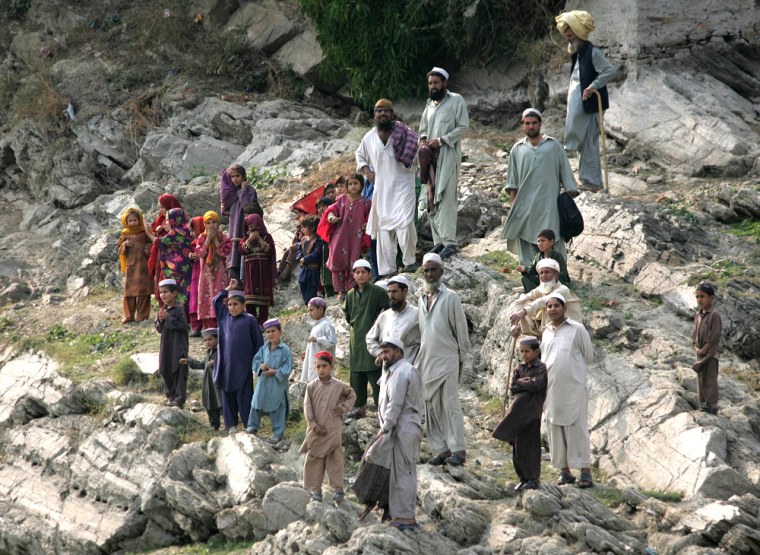Fears of disease among South Asia’s quake survivors grew Thursday after health officials said 22 people had died from tetanus. Doctors were also bracing for a spike in pneumonia, bronchitis and other diseases with the coming Himalayan winter.
President Gen. Pervez Musharraf asked officials to use all their resources to provide relief goods and shelter to victims in Kashmir and other parts of the country. He said the hundreds of thousands of people without shelter must get tents within two weeks.
The Oct. 8 quake is believed to have killed nearly 80,000 people and left more than 3 million homeless. Many of the tens of thousands injured had to wait a week or more to get their first medical treatment, so infected wounds have been rife.
Sacha Bootsma of the World Health Organization said there had been 111 tetanus cases since the temblor struck, of which 22 were fatal. She said the numbers were normal for a disaster of this magnitude.
Bootsma said all hospitalized patients were being inoculated against tetanus, which occurs when bacteria enter the body through cuts or scratches and infect the nervous system.
A government driver with a suspected case of hemorrhagic fever was taken from Bagh, a town about 40 miles from Muzaffarabad, to an Islamabad hospital, Bootsma said.
Blood samples were sent to South Africa for testing, but Pakistani health officials said Thursday the man was not suffering from a hemorrhagic fever, the state-run media said. The report did not give details.
Donors, including Pakistan’s rival India, have pledged $580 million for quake victims, but the United Nations said more resources were needed to save between 2 million and 3 million lives.
World Food Program spokesman David Orr said the agency needed money and supplies to distribute more than 500 tons of food aid a day. The agency has yet to reach a half-million people in remote villages, although those communities were believed to have some food stocks, he said.
“More people could die in the aftermath from lack of shelter and food than in the earthquake itself,” he said.
In a positive sign, more villagers were moving down from the mountains, said Urooj Saifee of the U.N. High Commissioner for Refugees. The UNHCR has set up three new tent sites in Kashmir’s Jhelum Valley, with a capacity for 24,000 people, he said.
UNICEF will get 20 large tents to set up schools for 75,000 children in the Muzaffarabad area, said Zeba Tanwir Buqhari, UNICEF’s chief of operations in the city.
School enrollment is expected to fall by about 20,000, with an estimated 11,000 children reportedly injured and 9,000 dead or missing.
Pakistan’s government raised the official death toll to 54,197 Wednesday. Central government figures have consistently lagged behind those of local officials, which put the death toll in Pakistan at about 78,000. A further 1,350 people died in Indian-held Kashmir.
